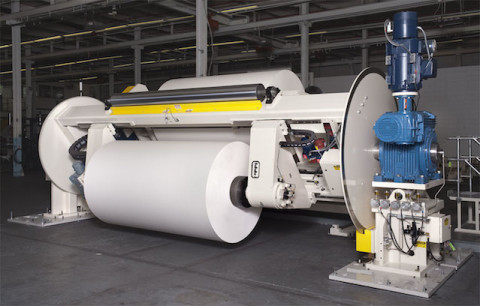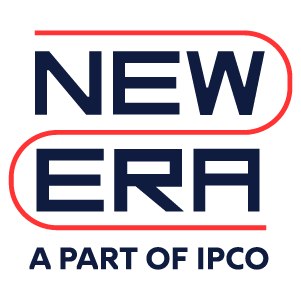 The following is part one of a series of 4 blogs that will go through a white paper written by New Era Converting Machinery’s Bob Pasquale. The white paper is titled “Selecting an Unwind and Unwind Splicer System.”
The following is part one of a series of 4 blogs that will go through a white paper written by New Era Converting Machinery’s Bob Pasquale. The white paper is titled “Selecting an Unwind and Unwind Splicer System.”
Part 1 will offer an overview of the entire paper and what to expect in coming blogs. Part 2 will discuss the holding of the web rolls when unwinding and tension control of the unwinding material. Part 3 continues with the guiding of the web as it exits the unwind, how the end of the expiring roll’s web will be spliced to the beginning of the new roll’s web, and how the expiring roll’s web will be cut. Finally, part 4 will detail the number of unwind positions, offer a comparison of roll to roll versus continuous unwinding, and finish with a brief conclusion.
—–
PART 1: Introduction and Background
INTRODUCTION:
There are many factors that need to be considered when selecting an unwind and unwind splicing system. These include how the rolls will be held in the unwind, how the unwind tension will be controlled, guiding of the web as it exits the unwind, how the material rolls will be spliced together and how the expiring roll’s web will be cut. Additionally, one needs to consider the number of unwind positions that are best for the application. This presentation will address the considerations of these topics when selecting an unwind and unwind splicing system.
BACKGROUND:
An unwind is used at the beginning of most web converting lines to allow rolls of web to be delivered to the process. There are many different design features that need to be considered when selecting an unwind system that is best for a particular application. Quite often these design features are dictated by the process requirements. Factors such as the speed of the process, tension requirements of the web, width of the web, weight of the web rolls, diameter of the incoming rolls, type of material being processed and method by which the web from the expiring roll can be joined to the web from the new roll all affect the design decisions. We will look at many of the decisions that need to be made and the factors that need to be considered when making them, breaking them down into the following categories:
• Holding of the web rolls when unwinding
• Tension control of the unwinding material
• Guiding of the web as it exits the unwind
• How the end of the expiring roll’s web will be spliced to the beginning of the new roll’s web
• How the expiring roll’s web will be cut
• Number of unwind positions
• Roll to Roll versus Continuous Unwinding
We will address the technical aspects of each of the above categories as well as the associated financial impact. We will also discuss certain associated safety concerns.
For purposes of this paper we are assuming center type unwinds, where the material is supported through a core located in the middle of the roll.
###
*Check back soon for the next blog in the series!*













 Downloadable Brochures in PDF Format
Downloadable Brochures in PDF Format